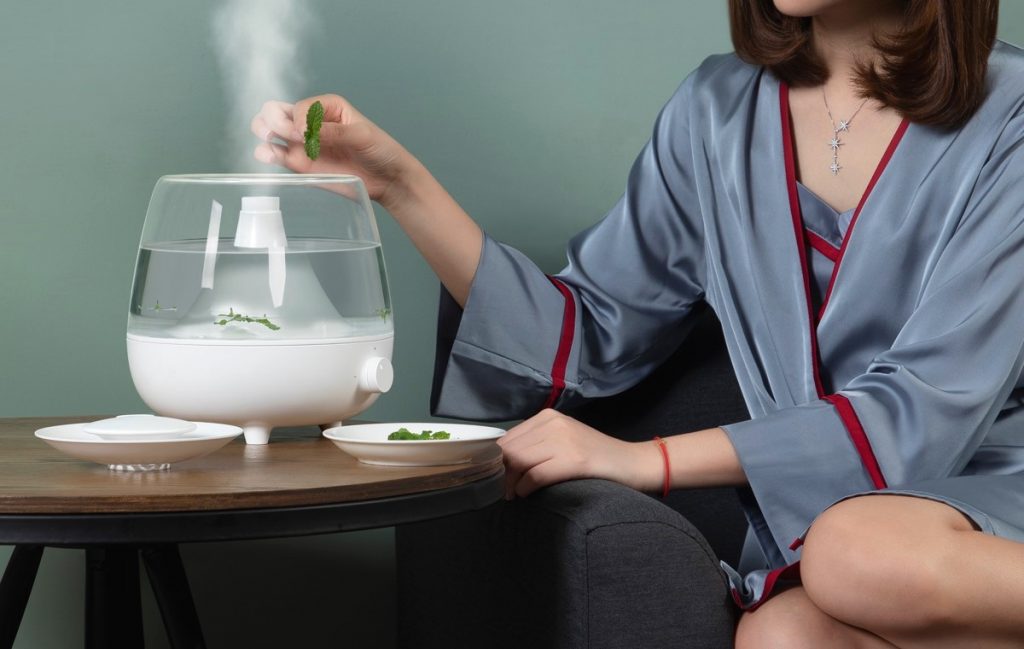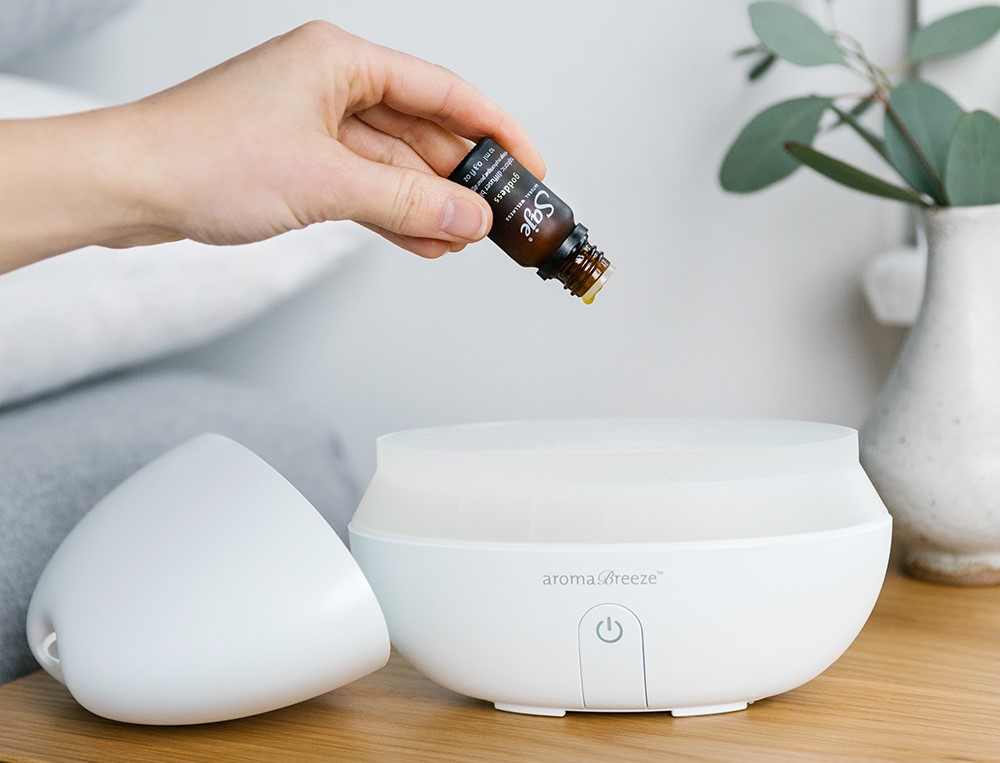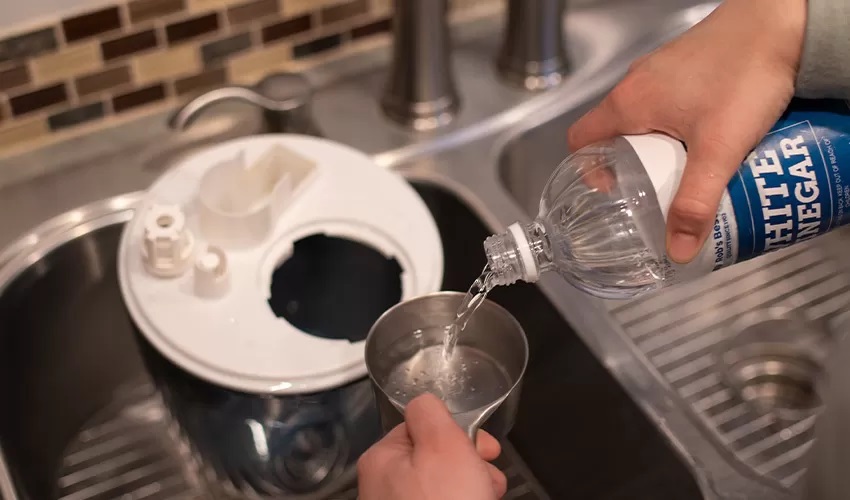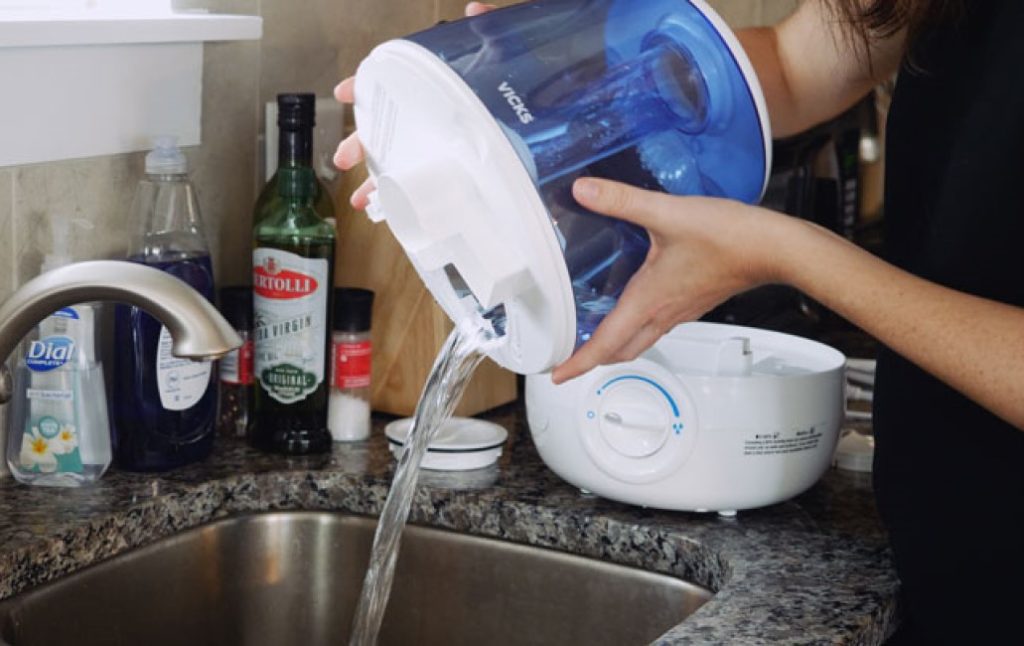

In a bid to optimize their health, many try out different strategies. Exercises, healthy dieting, for example, are considerations people opt for to improve their health.
Besides these common attempts, many are ignorant of the effect of, for example, air texture on their skin.
Did you know excessively dry air can pose severe adverse effects on your sinuses and skin? For this, many buy humidifiers in their homes, particularly for use in rooms they spend the most time.
It is common practice to place humidifier close to beds. But how close should a humidifier be to your bed is another concern entirely.
Perhaps you’ve finally decided to acquire a Humidifier after all the nice stuff you heard about it. Of course, a humidifier can bring you untold comfort and a range of health benefits.
While you can’t wait to humidify your room, using a humidifier can be somewhat tricky – particularly for first-time users.
How does the humidifier work? Are there specifics to placing the units for better results? Does it in any way, affect sleep?
If one, or more, of these questions, mirror your concern(s) about humidifiers, then, read on.
The article captures everything you need to know about humidifiers —from benefits, types, humidifier placement, maintenance, and everything between.
Having a humidifier in your bedroom comes with several amazing benefits. Among the lots, here are three common benefits:
Here’s a major benefit of using a humidifier, particularly for those who reside in an arid climate. It eases breathing, clears your airways, and curb congestion, enhancing a long peaceful sleep.
Having a humidifier in your room helps boost the humidity and moisture levels in the air, reducing the chances of flu and cold, significantly.
Besides, it helps you flush out your nasal pathways and thin out accumulated mucus inside your nostrils. This, in turn, eases your breath, increasing relaxation, and overall comfort.
Air dryness often results in itchy skin and related conditions like eczema or may aggravate existing skin conditions.
Humidifiers reduce the extremity, providing enough moisture for a soothing effect.
Also, if you apply skincare products at night, the humidifier will help retain the nourishment for long, rather than offering discomfort and dryness.
Although they share close similarities from outward appeals, they come with distinct features. Here are the most common types of humidifiers on the market.
Cool mist and the warm variant, though quite similar, spot slight differences. While their evaporative counterpart is less common, it has some features absent in the warm and cool options.
Let’s quickly examine their difference.
Typically, Cool Mist models use low-power techniques – like ultrasonic devices – to create a fine room temperature moist. They are brilliant energy savers and particularly suited for dry climate regions.
Cool mists have low-sound technology, and most versions offer flexible output level regulations.
These models create water vapor by generating heat with electric power and creating a mild, low-temperature vapor in the form of steam. These options are most suited for congestions, colds, and wintertime.
One downside of these units, however, is that they generate heat as the released water mist warms before escaping the device. Also, unlike cool mist products, warm mists do not come with flexible output control, but are instead, designed with one or two fixed output levels.
As with most appliances, you will expect some low-key sounds from your humidifier. However, some are noisier than others.
Ultrasonic humidifiers are considered the super-quiet variant, which is attributable to its high-frequency sound waves. These options create a better atmosphere for a comfortable sleep.
Normally, humidifiers need constant maintenance for high performance.
Where to place a humidifier in the bedroom is, arguably, the biggest concern among new owners.
Although floor placement can be effective also, I wouldn’t recommend it. Why so?
When placed on the ground, a pet, a curious toddler, or even an adult can accidentally stumble upon it in the dark. This may lead to burns — particularly if it’s the warm mist variant that produces steam.
Besides, the humidifier itself may get damaged from the effect.
Keep in mind, also, that dust settles on the floor and exposes your humidifier to dirt.
If left uncleaned for an extended period, your humidifier may soon begin to release germs and pathogen-packed moisture, exposing your health to great risk.
Often, manufacturers suggest having your humidifier a couple of feet above the floor, to avoid the accumulation of moisture in the surrounding area.
Accumulation of moisture over time may cause the floor to slip and lead to accidents caused by unexpected falls.
Besides, excessive moisture can cause mildew and mold if it leans directly on a carpet.
If your nightstand is a bit far from your bed, that’ll be a good spot for your humidifier to function from. But in the event your nightstand is attached to the bed, you may seek an alternative.
Here, a study table, safe distance apart, maybe your best bet. However, do well to remove all your books and stationery from the tabletop, else they get damp.
Placing a water-resistant tray beneath your humidifier will also help prevent your furniture from any likely effect of potential water residue.
The rule of thumb for humidifier placement says humidifiers should be placed, at least, 3 feet from your bed.
Also, check out for the manufacturer’s safety precautions and warning. The product manual usually contains a comprehensive guide on how to place your humidifier. This will save you a whole lot in the long run.
Practically same rules apply when considering an ideal humidifier placement in your baby’s room
Here are some guidelines:
Here are factors that should determine humidifier placement decisions:
If you prefer a cool-mist modifier, it will be best placed near your bed. The cooling effect can inspire a more comfortable and peaceful sleep.
If the humidifier comes with a built-in filter, place it close to your bed, as it helps reduce cold- or congestion-induced discomfort.
For warm mist humidifiers, you may position it close to your bed, albeit, only when you are alert and well awake.
For sleep time, your warm mist humidifier should be put a distance away and on a firm surface.
As mentioned, keep far from children’s reach. Remember to keep cords away from your baby’s reach and, in fact, any one’s path.
Typically, humidifiers are designed to increase air moisture. Logically, a humidifier will be most needed when the dryness of your room air causes you discomfort.
Ideally, room humidity ought to be kept between 30 and 50% – should never exceed 60% or fall below 30%, suggests the Environmental Protection Agency(EPA) Trusted Source A Brief Guide to Mold, Moisture and Your Home - EPA This Guide provides information and guidance for homeowners and renters on how to clean up residential mold problems and how to prevent mold growth. The content on these web pages is based on EPA’s publication “A Brief Guide to Mold, Moisture and Your Home.” www.epa.gov .
Anything above 60% may cause hygiene concerns like mold and bacteria, while levels below 30% may lead to health concerns like dry skin, sinus irritation, or nose bleeding.
Besides nosebleeds and irritated skin, excessively dry air could cause damaged floorboards and furniture.
You may need a digital hydrometer to confirm your room’s humidity level. You may also use an indoor hydrometer for a fast and precise report.
When your room’s humidity level is low, you may wake up to dry lips and some parched feelings. These signal the need for a modifier to help you increase the moisture in the air.
That said, ensure your health is in top shape before you work your humidifier all night.
If you are skeptical about mold-building in your room, take caution when using a humidifier unit. Besides, you may reconsider continued usage if you have a low tolerance for high humidity.
If your tolerance level is low, having your humidifier on all night should be discouraged.
So while it is generally safe to use your humidifier all through the night, individual health status and tolerance levels are important considerations. It all boils down to individual needs.
Often, people put essential oils in their humidifiers. It is, however, another thing to know the most suitable essential oil based on individual needs.
Do you seek stress relief or simply a scent to induce relaxation, particularly at night time? Again, choosing the right oil boils down to individual preference.
Lavender essential oils, for instance, aid calm and relaxation, particularly for a much craved night sleep.
Peppermint oil, on the other hand, is remarkable for stimulating the senses, which comes therapeutic for common colds, fatigue, and trauma.
One great way to take advantage of these essentials is to diffuse them in your humidifier. By such, the effect comes alive after only a couple drops. It generates moisture and, at the same time, offers relief for dry throat, dry skin, and flu symptoms.
Keep in mind that while some humidifiers are compatible with essential oils, others are not. So, before you try any, check what the manufacture’s guide says.

If you are using a compact-sized humidifier for a big room, the unit may be better placed somewhat close to the bed.
With the size, it may not have enough capacity to create a desirable effect across the entire room.
If placed too far, the mist generated may not even get to you, therefore defeating the purpose.
Basically, the room size and the humidifier size are key determinants of the effect you get from a humidifier.
If you get a small humidifier for a big room, the effect might be insignificant.
Conversely, if you use a big humidifier in a compact space, the effect might be excessively undesirable and could also create mold and some health concerns.
In simple terms, a humidifier converts water into fine moisture, which increases the humidity level of the room.
Although some are not electric-powered, many – and perhaps, the most effective ones—are powered by electricity.
Humidifiers are remarkably easy to operate. Here are the steps:
The time it takes to run out is largely dependent on the tank size and the humidifier’s output setting.
So, here, the cheapest isn’t entirely the best. You may want to add some extra dollars to get a bigger tank model — particularly if you wish to run your humidifier all night
As with all appliances, your humidifier needs proper regular maintenance to remain in good shape and offer optimum performance.
Here are key maintenance notes always to remember:
Do not place a humidifier with tap water near your bed. Tap water contains minerals that support bacterial growth. These contents are converted to white dust and released into the air. The dust is dangerous to both you and your properties. Hence, distilled water is advised.
If they are not cleaned regularly, then don’t put them close to your bed. Although humidifies comes with filters, bacterial, mildew, and mold collected will, over time, multiply and be released into the air. If such stays close to you, you can easily become a victim of such harmful circumstances if inhaled.
For safety, clean your unit at least twice a week. Ensure the plug is off the socket during this exercise. Dismantle the detachable parts and disinfect. A bleach and 3% hydroxide peroxide solution will do.
Refer to the product manual for a more specific way to clean.
That said, remember to rinse the tank thoroughly with clean water after applying such chemicals.
Ensure you regularly replace the water in the unit. This may be done every day – if possible. Leaving stale water in the unit encourages bacteria growth.
Some humidifiers are designed with a filtration system; others are not. If you get a model with a built-in filter, ensure you replace it regularly.
Based on the water used, you may need to change it if you notice dirt build-up. Again, kindly refer to the manufacturer manual for product-specific guidance.
Humidifiers are, no doubt, becoming a must-have across many homes. These units come with a range of benefits.
That said, while it’s one thing to purchase an efficient humidifier, it’s another to understand how it works and how it is best used for better performance in your bedroom.
Remember that the positioning of your humidifier largely dictates the resultant effect.
Also, remember that the room size and humidifier capacity co-relate.
Lastly, take note of the conditions that determine the best place to put your humidifier — how close should a humidifier be to your bed or your baby’s.
With this guide, you can go ahead and enjoy all the benefits the humidifier was designed to offer, without any worries.





